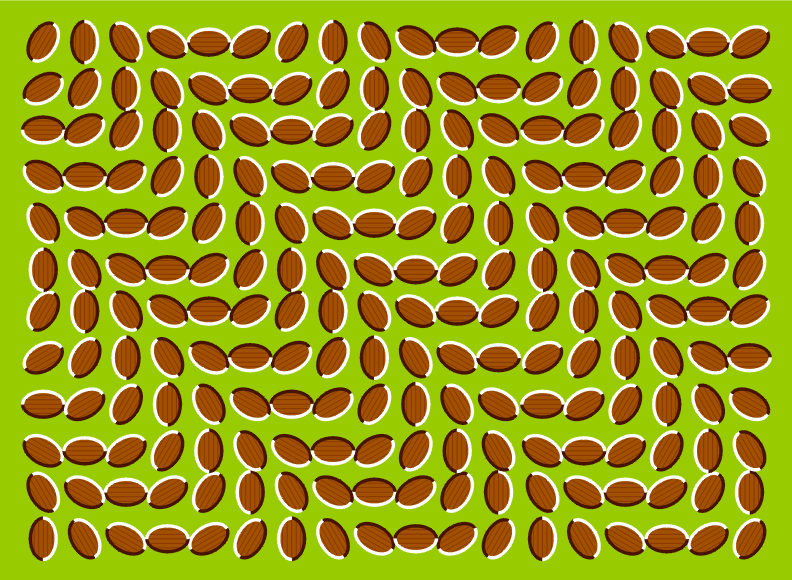In the image above there is a clear difference in color, but on the other hand the brightness is the same both under a blue sky and when the sun was not fully up.
Perception Law Blog
Wednesday, November 6, 2013
Brightness Constancy
Definition: our ability to see objects as continuing to have the same brightness even though light may change their immediate sensory properties
Monocular Cues
Monocular Cues
When perceiving an object from a distance, we rely on visual cues to help is analyze the object. Some of these visual cues can only be used with one eye, called monocular cues. Monocular cues are visual cues relating to depth or distance, which can be used by one eye alone.
Relative Size:
If two objects that are about the same size are at different distances (one closer and one farther away), the object that is closer will be perceived as larger. In one of the below pictures, Liv and Nick are about the same height and they are at different distances. Liv is perceived to be taller because she is a shorter distance away from the camera than Nick.
If two objects that are about the same size are at different distances (one closer and one farther away), the object that is closer will be perceived as larger. In one of the below pictures, Liv and Nick are about the same height and they are at different distances. Liv is perceived to be taller because she is a shorter distance away from the camera than Nick.
Texture Gradient:
A texture gradient monocular cue can be defined as when you are looking at a object that extends into the distance, the texture becomes less apparent the further it goes into the distance. In the other picture below, you can see a ground level view of the floor. You can see the detail and texture of the floor up close but as the distance increases, it becomes harder and harder to see the texture until eventually it all blurs and there is no texture present in the distance.
Binocular Cues
depth cues, such as retinal disparity and convergence, that depend on the use of two eyes
In this photo Inna's task was to use two eyes to touch the tips of mittens. she has no difficulty doing so.
Size Constancy
Size
Constancy refers to the fact that our perceptions of the size of objects are
relatively constant despite the fact that the size of objects on the retina
varies greatly with distance. The is also an allusion known as the Ames Room.
The room appears to look like a normal square room, but it is actually a
trapezoid shaped room. Two people stand at each corner on of the room. The one
person appears to look very big and the other looks very small. This is a very
neat trick. This video shows the room.
This video explains it very well.
This video explains it very well.
This video explains it very well.
Motion Perception
There are two
orders of motion. The first order of motion is two or more stimuli that are
switched on and off in alternation can produce two different motion percepts.
An example of this concept is depicted from things like billboards and signs
that make the viewer originally perceive the object as moving but in fact it is
just stationary shapes that are turned on and off to make the allusion that
they are in fact moving. This is also call apparent motion.The second order of motion is motion in which
the moving contour is defined by contrast, texture, flicker or some other
quality that does not result in an increase in luminance or motion energy in
the spectrum of the stimulus. These pictures are all examples of Motion Perception.
http://www.youtube.com/watch?v=WZ3Q82ZmgTQ - This video shows a Las Vegas sign that appears to be very motion like, when in fact not at all.
Shape Constancy
Definition: the tendency to perceive an object as having the same shape regardless of its orientation or the angle from which we view the object.
Even though the viewpoint of the gift card below changes, we still have the idea that the object is the same shape and we perceive it as the same object every time. Law of Closure
Definition: Our brain’s tendency to look for the whole, not the
parts, drives us to fill any gaps in a perceptual field.
IBMs symbol is broken up so how is it still visible? We can still see the letters because our brain fills up the gap and allows us to see the logo as a whole.
CAN YOU READ THIS?
Subscribe to:
Comments (Atom)










